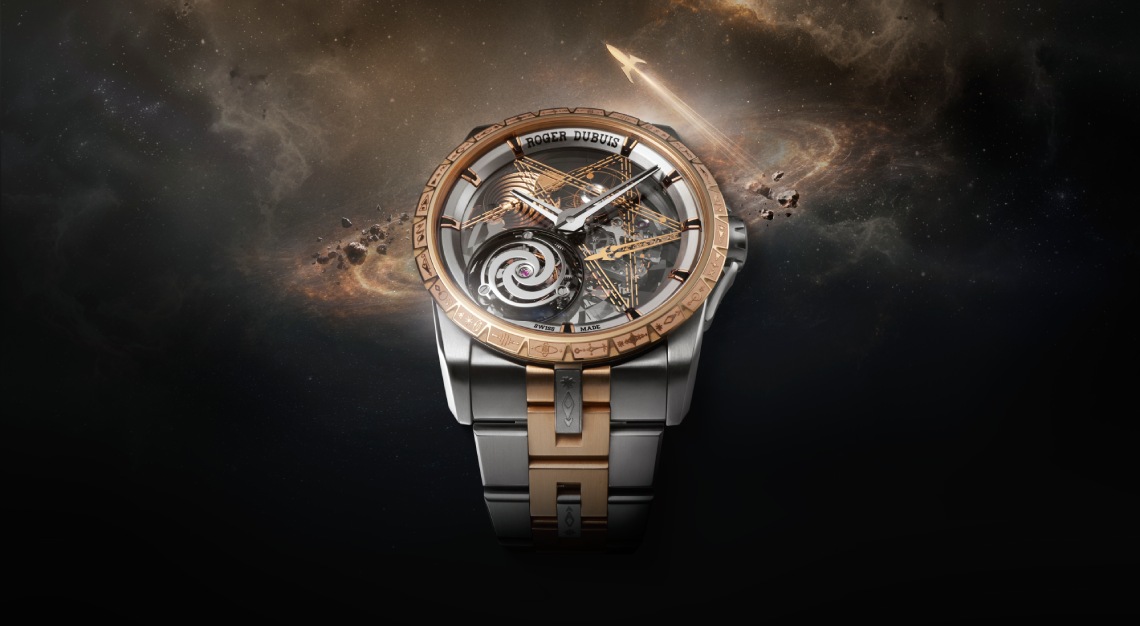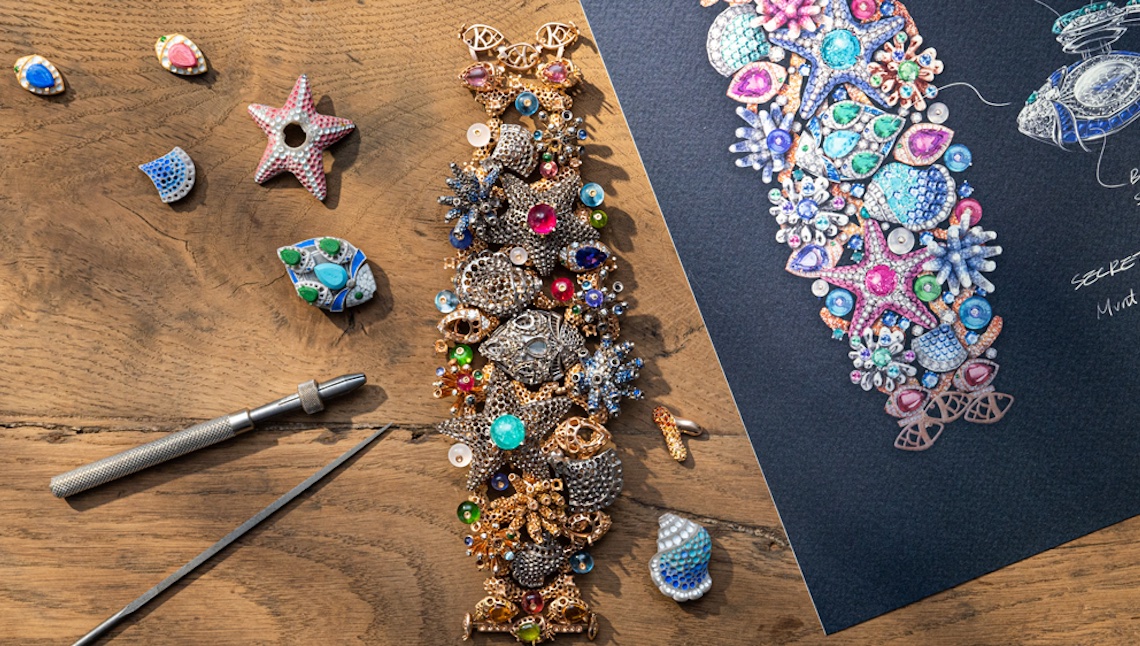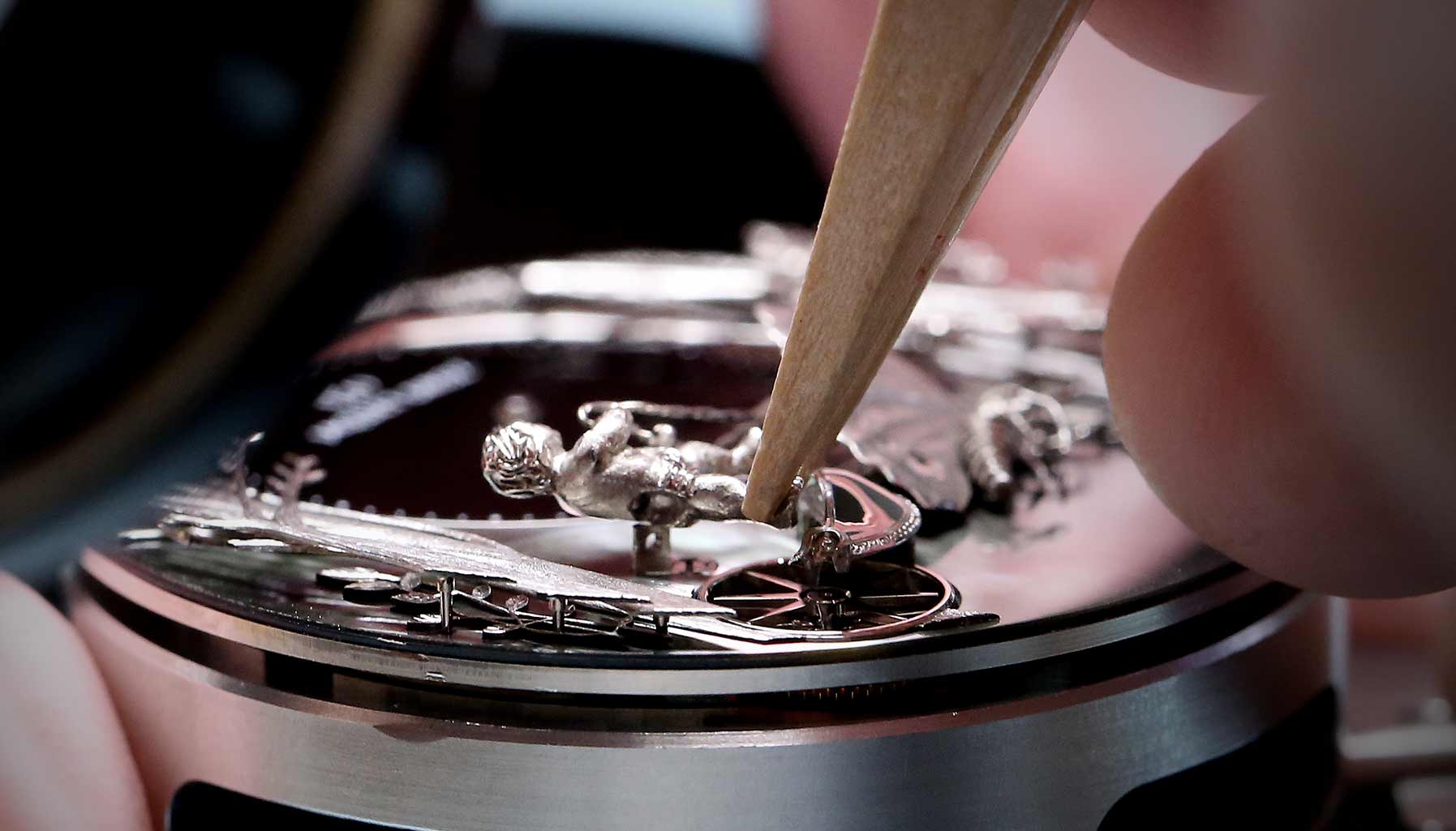Audemars Piguet beefed up its elegant luxury sports watch 30 years ago
In the late 1980s, Audemars Piguet was in need of a shakeup.
The Royal Oak — the world’s first “luxury sports watch” with an integrated bracelet — had been an enormous boon to the company, if somewhat of a slow-burn release. Now, however, Stephen Urquhart, chairman of Audemars Piguet, could see that it was time for another revolution. The 20th anniversary of the Royal Oak’s 1972 debut was looming; what better opportunity to both release a special anniversary model and to anticipate a new trend appreciated by a young designer of his, Emmanuel Gueit.

Gueit had noticed that women were beginning to wear men’s watches. He concluded that men’s watches themselves could thus use an injection of masculinity—that they could be made bigger, and bolder, to the extent that they would also attract a younger audience. In fact, he thought, this new men’s watch should be so bold that women would refrain from wearing it. A real man’s watch. (This is no doubt a sentiment that wouldn’t fly so well in the 2020s, but alas, times change.)
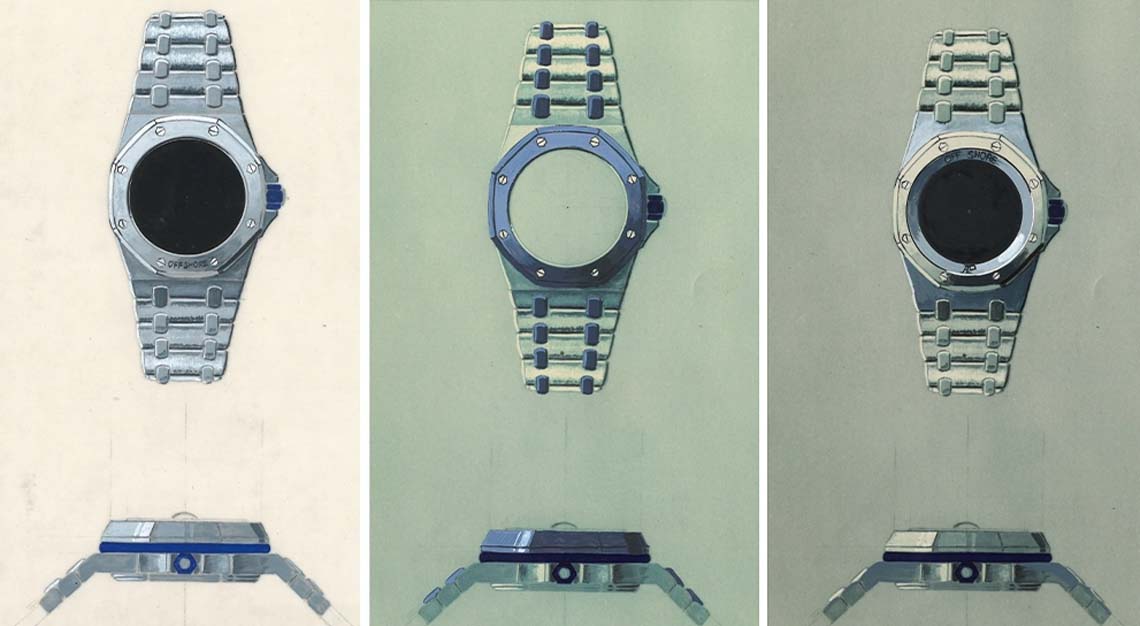
In 1989, Gueit got to work on a newer, heftier Royal Oak and presented the design to Urquhart. He had certainly taken his boss’s brief—“Create something young men would want to wear”—to heart: The new proposed R.O. was 42 mm in diameter and nearly 16 mm tall, with Therban rubber chronograph pushers, a Therban rubber crown, a triple-register chronograph layout, a tachymeter scale on the dial flange, and a date. (As an R.O., it also featured a blue petite tapisserie dial and an octagonal bezel with a rubber gasket and eight hexagonal screws.)
The reception from AP brass was mixed; management thought the watch too bold, heavy, and brash, and nearly deep-sixed the project. (Gérald Genta, legendary watch designer and conceiver of the original Royal Oak, famously hated the Offshore, and even railed against it publicly.) The project was postponed, and its release didn’t coincide with the 20th anniversary of the R.O. in 1992 as initially planned due to manufacturing difficulties stemming from the model’s unique design characteristics. However, in 1993, this new, larger Royal Oak finally saw the light of day.
It was thought that associating the bold new watch with the world of “offshore” boat racing—which takes place some distance from the coast and is fast, dangerous, and exciting—might help boost its image as a watch for young men, especially during the hedonistic, carefree 1980s. However, “Offshore” didn’t appear on the watch at all, at first; if the proverbial bird didn’t fly, the thinking went, it would be easy enough to write off this one reference, and perhaps reuse the name in a different collection. Eventually, the new name took hold: The first 100 examples said only “Royal Oak” on the caseback; but, beginning with No. 101, “Royal Oak Offshore” was spelt out in full. The first reference, the 25721ST, was nicknamed “the Beast” for somewhat obvious reasons.

Sales weren’t exactly “brisk”: Only 61 pieces were sold in 1993, though much of this sluggishness can be attributed to initial production difficulties. The following year, the brand moved 330 pieces, while 1995 saw 325 units sold. (During the first two years of regular Royal Oak production, AP had sold 1,652 pieces—quite a difference, and admittedly a cause for concern. At least initially.)
The Italians, as usual, were ahead of the sartorial curve and embraced the Beast: From 1993 through 1996, this market accounted for a quarter of the Offshore’s total sales, causing the company to publish an ad in 1994 asking for customers there to kindly wait patiently for their watches. From 1997, the young Italian alpine skier (and Olympic gold medal winner) Alberto Tomba began sporting an Offshore, giving the new model family a prominent boost. Later on, legendary Hollywood actor Arnold Schwarzenegger as well as Formula One drivers, Michael Schumacher and Rubens Barrichello, embraced the bulky watch, bringing it international fame.
The stainless steel ref. 25721ST would remain in production for roughly a decade, though the Royal Oak collection would expand significantly: In 1995, it received its first all-gold and two-tone models, while in 1996, six new designs entered the fold, including the first Offshore with a leather strap. (Ladies models measuring 30mm in diameter were also introduced in that same year, despite the model family’s initial hyper-masculine design remit.) Three other references were all available in a new medium size of 38mm, expanding significantly the Offshore’s potential customer base.
The collection now featured chronograph- and complete calendar-equipped references, while coloured versions were introduced in 1997 to coincide with the 25th anniversary of the Royal Oak, including apple green, red, orange, canary yellow, garden, sky blue, and brown dials. Annual sales reached 1,000 pieces for the first time that same year, while 1998 saw the introduction of the first titanium model.

Beginning with 1999’s limited-edition Offshore for Arnold Schwarzenegger’s End of Days film, AP began producing special versions of its beefy luxury sports watch to coincide with partnerships in the worlds of hip-hop, basketball, and more. In fact, the maison created over 20 Royal Oak models in the 1990s; between 2000 and 2010, the number ballooned to 135. By 2010, the Offshore had turned a corner—14,011 watches had been sold that year, compared with 1,339 in 2000. (AP sold 8,019 non-Offshore Royal Oaks in 2010, by way of comparison.)
These days, there’s simply no stopping the Offshore. For its 30th birthday in 2023, AP introduced the Royal Oak Offshore Selfwinding Chronograph, the first such Offshore in black ceramic to feature a matching bracelet. A short time later came the Royal Oak Offshore Selfwinding Flying Tourbillon Chronograph, a 43mm behemoth with a hand-finished ceramic case and an anodised green inner bezel. Collectors can’t seem to get enough, which is borne out by the fact that Audemars Piguet’s revenues crested $2.17 billion in 2022, exceeding those of Patek Philippe. Not bad for a company that only produced 307 chronographs in total between the 1930s and the 1950s!
To help you get a handle on the Royal Oak Offshore, we’ve chosen to highlight several of the most notable references throughout the collection’s 30-year history. And while three decades certainly constitutes a lengthy run, there’s little doubt that this powerful model is just getting its sea legs. Indeed, now that Audemars Piguet has become one of the most notable marques in the watch space—and perhaps, it’s fair to say, in the luxury space at large—the sky truly seems like the limit for the Offshore.
The Royal Oak Offshore Through Time:
Reference 25721ST (1993)

The very first Offshore, the ref. 25721ST, didn’t even say “Offshore” anywhere on the first 100 pieces, as AP was fearful it wouldn’t be successful and wished to retain the name for possible use on a future model family. Measuring 42mm in diameter with a 16mm-thick, stainless steel case, the “Beast” boasted a triple-register chronograph with a tachymeter scale along the dial flange, a date, a blue petite tapisserie dial, and an octagonal bezel with a rubber gasket and eight hexagonal screws; powering it is the Calibre 2126/2840, based on a Calibre 888 from Jaeger-LeCoultre with a Dubois-Depraz chronograph module. Upon launch, it cost twice the price of the Royal Oak ref. 14790 — and positively outraged many in the watch world. However, the Italians took kindly to this brash new upstart of a timepiece, and by 1994, there was a shortage in that market. It was produced in various series through 2003/2004.
Diameter: 42mm
Movement: Calibre 2126/2840 automatic
Price on Secondary Market Today: ~US$30,000+ (original D-series examples ~US$100,000+)
Reference 25770ST (1996)
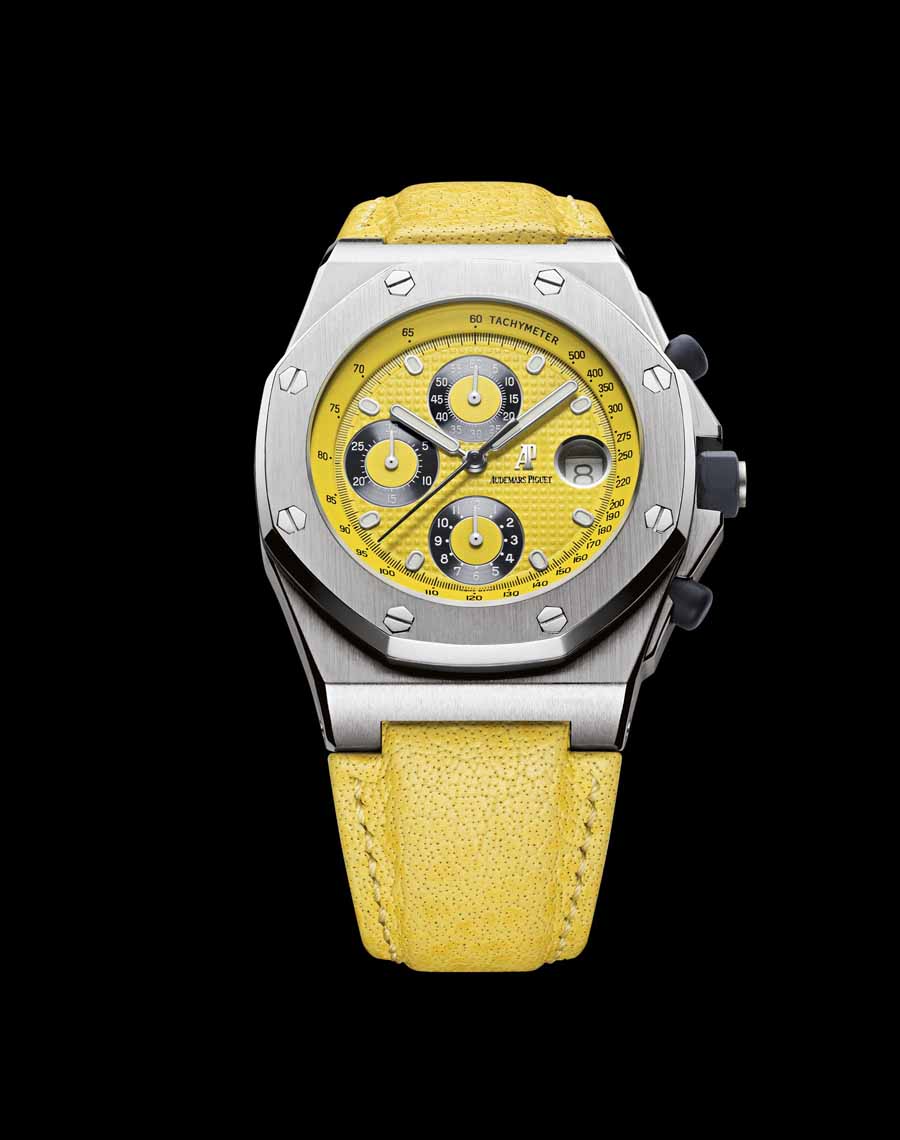
Audemars Piguet was once again ahead of the sartorial curve when it launched the reference 25770ST in 1996. Though this reference was essentially identical in mechanics to the “Beast” or 1993, its bold colours meant that it stood apart. (Far apart.) Available in eight bright shades with matching leather straps—which constituted another first for the collection—the 25770ST took a beefy, hyper-masculine design object and dressed it up like the type of oversized lollipop you’d win at a county fair. When glancing through the reference’s available colours (Deep Blue, Yellow, Orange, Red, Maroon, Purple, Turquoise, and Green), one is instantly reminded of Stella-dial Rolex Day-Dates or modern Oyster Perpetuals; no doubt the same mentality that causes collectors to go gaga for these watches saw them striving to “catch ‘em all” as regards this colourful Royal Oak Offshore.
Diameter: 42mm
Movement: Calibre 2226/2840 automatic
Price on Secondary Market Today: ~US$15,000+ (depending on colour)
Ref. 25721TI Titanium (1998)
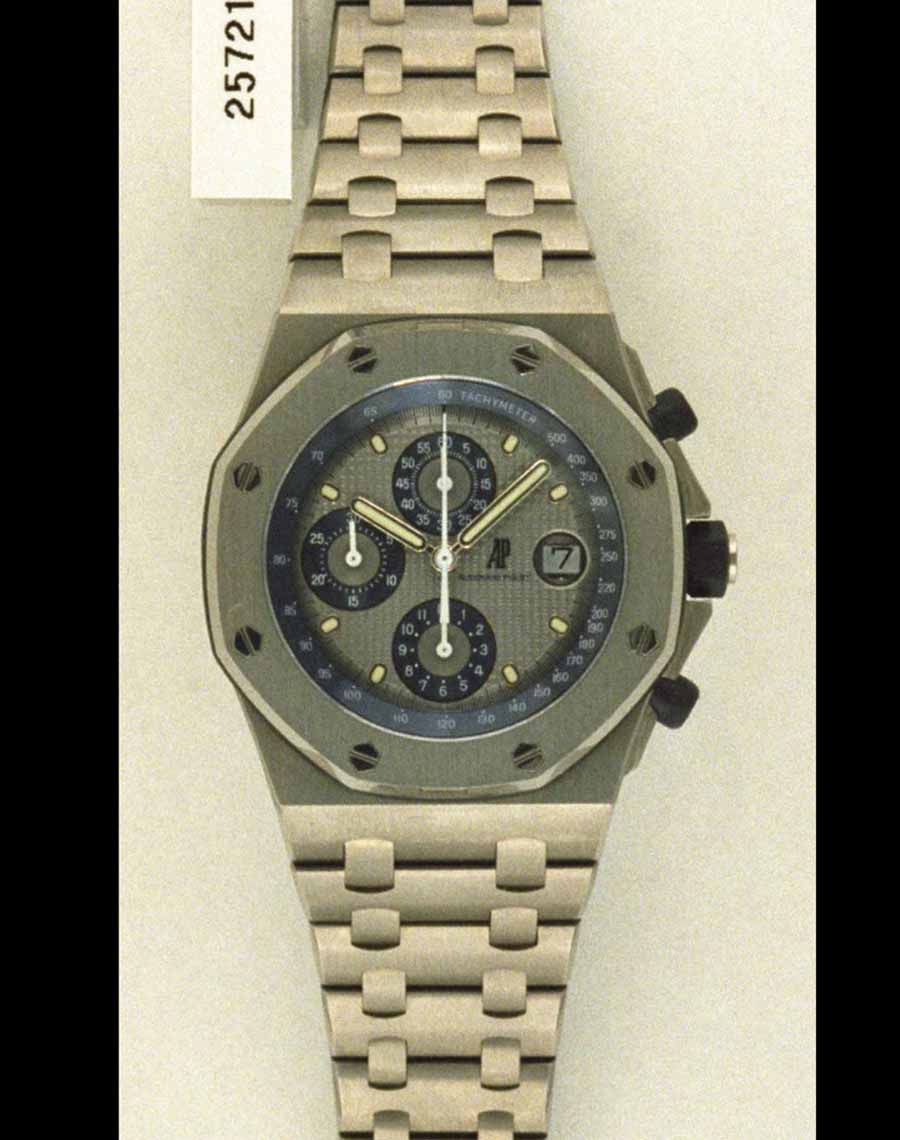
Given its dimensions, the introduction of an Offshore in titanium must’ve been a welcome event for AP devotees. Produced for six years in six different dial variations, the ref. 25721TI was the first Offshore offered in a “panda” configuration of a white dial with, in this case, blue-ringed totalisers. Powered by the Calibre 2226/2840 automatic movement with a chronograph module, it features an anti-magnetic inner cover (like its steel brethren) and the notoriously sturdy Offshore bracelet constructed with seven different link sizes that taper to the clasp. Measuring 42mm like the ref. 25721ST, the ref. 25721TI in its blue configuration could be mistaken for the steel “Beast,” though the second you hold both side by side, it’s clear which is which!
Diameter: 42mm
Movement: Calibre 2226/2840 automatic
Price on Secondary Market Today: ~US$25,000
Ref. 25770SN “End Of Days” (1999)
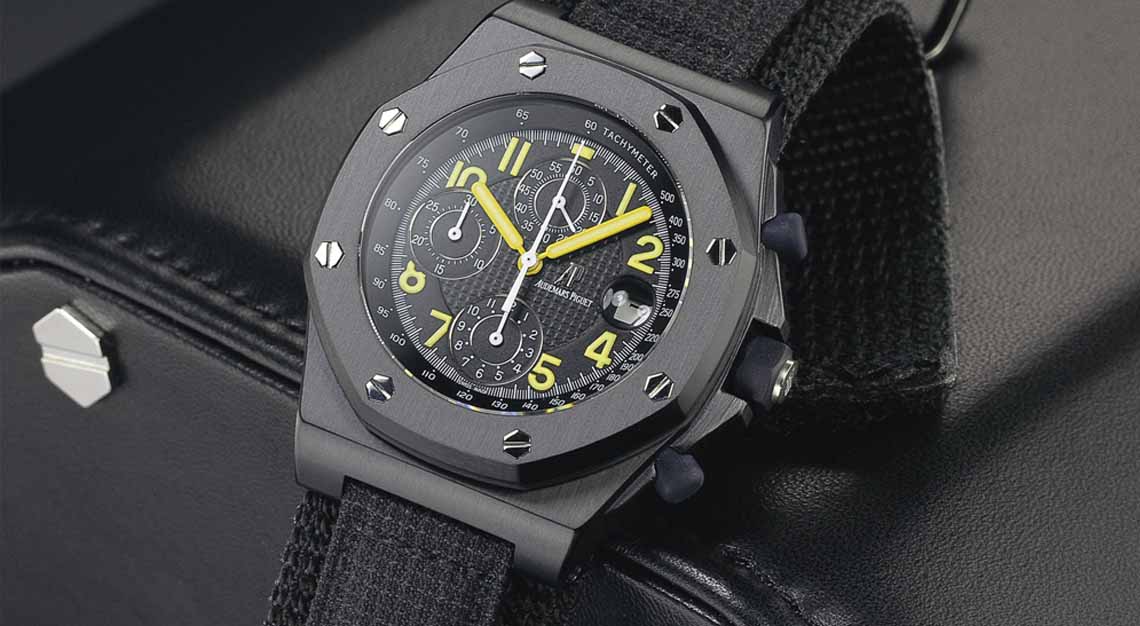
In the fall of 1997, Arnold Schwarzenegger travelled to Switzerland to meet with the Audemars Piguet team. Current CEO François-Henry Bennahmias, who was then a young salesman, struck up a friendship with the actor, which led to a collaboration on a special Royal Oak Offshore. Launched in concert with Schwarzenegger’s 1999 film End Of Days, this watch matched the colour of the moody, apocalyptic film: The first AP to be executed in black PVD, it shipped on a black Kevlar strap with a Velcro closure and was limited to 500 pieces, sales of which benefited the Inner City Games Foundation to help fund educational programmes for underprivileged youth. One of the first watches from any brand to feature a true celebrity partnership, it paved the way for myriad limited editions that would soon follow and has become highly collectible in its own right.
Diameter: 42mm
Movement: Calibre 2226/2840 automatic
Price on Secondary Market Today: ~US$40,000+
Ref. 25940 “Rubberclad” (2002)
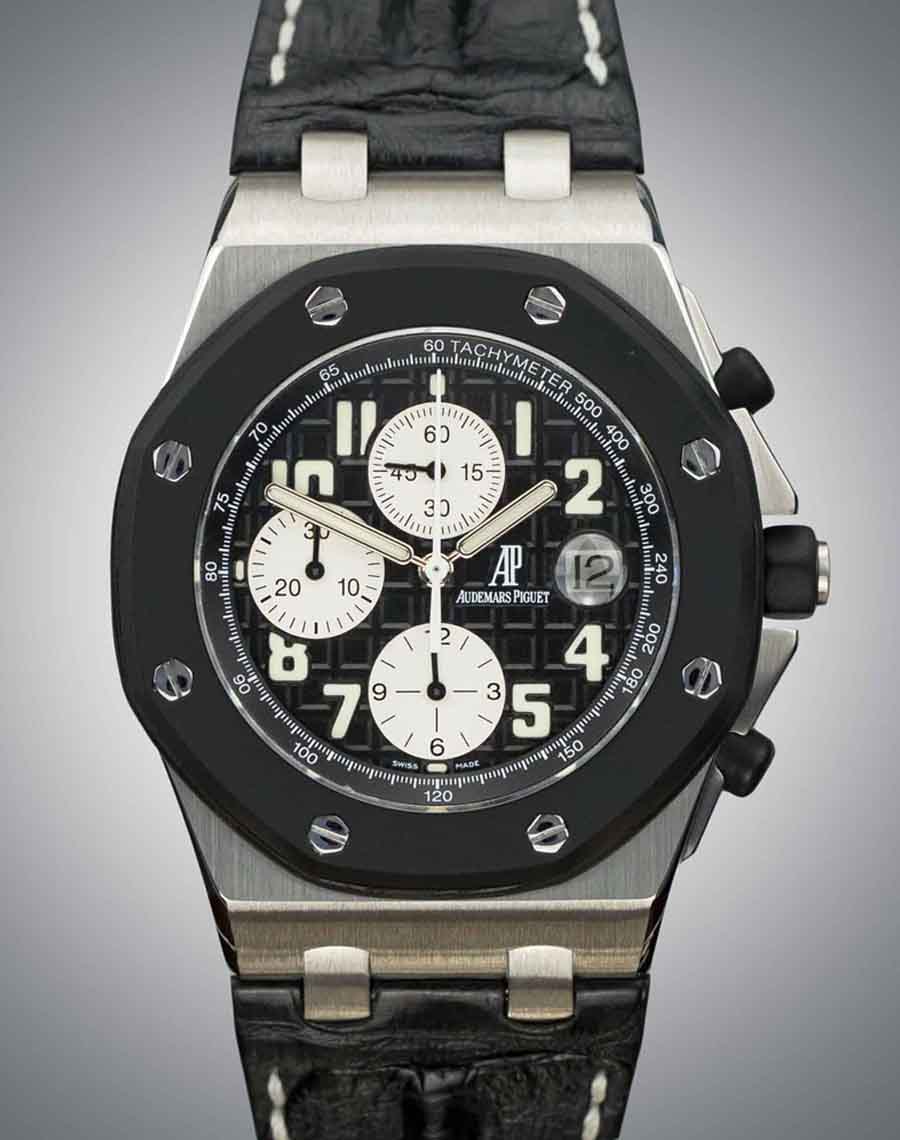
What’s so special about this particular Offshore, you ask? How about a rubber-clad bezel? AP fitted a rubberised coating to either stainless steel or 18K rose gold bezel (as the case may be), making for a watch-industry first, as well as a rather unusual aesthetic. The original—which was produced in two generations between 2002 and 2013—debuted in stainless steel with a silvered dial, but was later made available in pink gold with a cool grey dial. Due to the success of this model, the maison subsequently released numerous limited editions that bore rubber-clad bezels.
Diameter: 42mm
Movement: Calibre 2226/2840 automatic
Price on Secondary Market Today: ~US$21,000+
Ref. 15710ST Diver (2010)
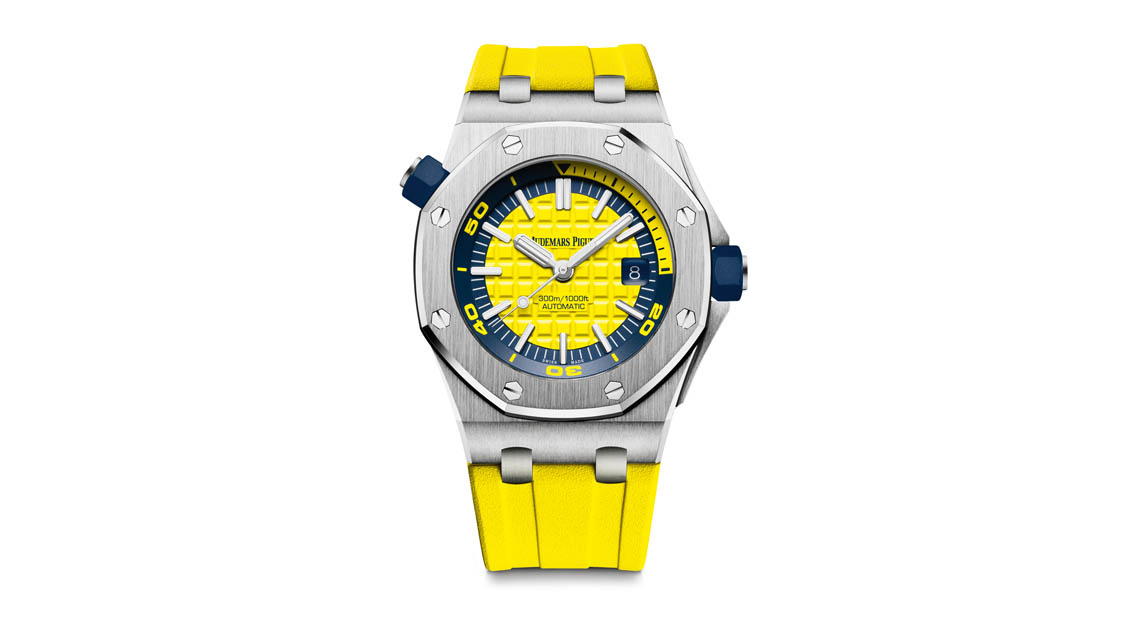
The reference 15710ST constituted the beginnings of a new subset of Royal Oak Offshore—that of the Diver collection. Designed specifically for SCUBA divers and compliant with ISO 6425 standards, it featured an increased water resistance of 300m, an inner rotating dive bezel, and, in a clever reference to the original Royal Oak, a double-index 12 o’clock marker. Released in stainless steel, forged carbon, and ceramic, the Diver is available in funky colours such as yellow and green—and even comes in a special edition produced in titanium and rose gold. In 2021, this sub-collection was updated with a new reference, 15720ST, that retained the original’s 42mm size but added small updates, such as tool-free strap changing and the newer Calibre 4308 automatic movement.
Diameter: 42mm
Movement: Calibre 3120 automatic
Price on Secondary Market Today: ~US$21,000+
Ref. 26237ST Chronograph Re-Edition 25th Anniversary (2018)
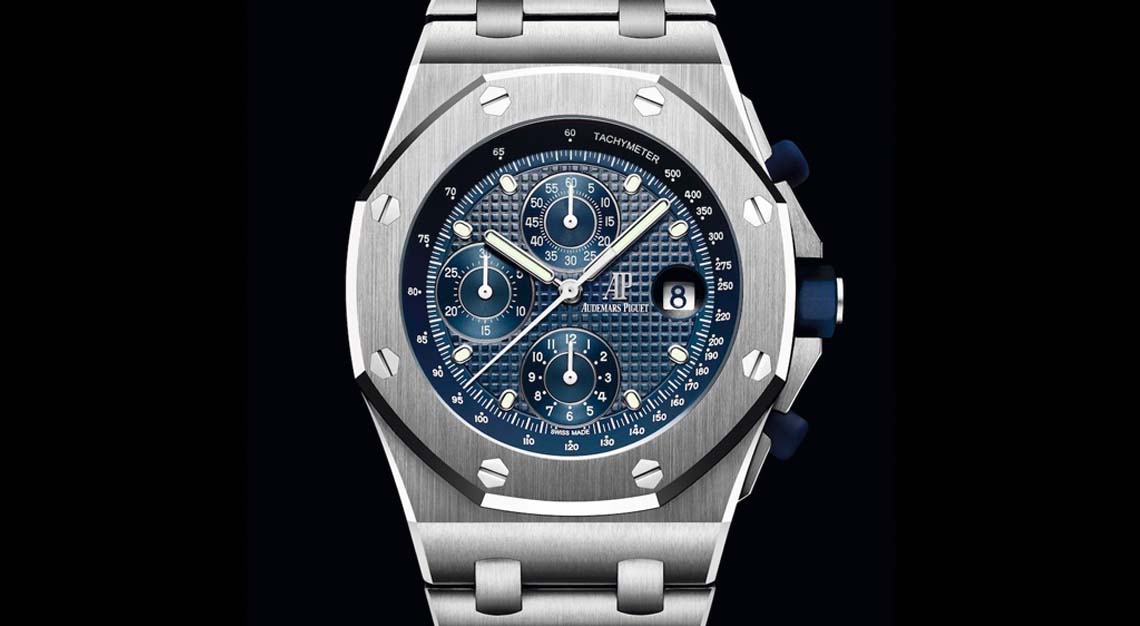
2018 coincided with the 25th anniversary of the Offshore collection, and the maison didn’t disappoint: Just before SIHH 2018, it released a special edition, the Ref. 26237ST Chronograph Re-edition 25th Anniversary, to celebrate a quarter century of a collection that nearly died on the drawing board. Largely a one-for-one reissue of the original reference 25721ST from 1993, it features a 42mm stainless steel case with vertical brushing, polished bevels, rubberised pushers, and a matching crown, and the iconic, octagonal bezel with eight hexagonal screws. (Really, the only significant update as regards the case and bracelet is the move from blade clasp to butterfly.) Non-limited, it debuted at a price point of 25,000 CHF—though it sometimes trades for double that price these days.
Reference: 26237ST
Diameter: 42mm
Movement: Calibre 3126/3840 automatic
Price on Secondary Market Today: ~US$35,000+
Ref. 77601BC.YY.D343CA.01 Selfwinding Music Edition (2022)
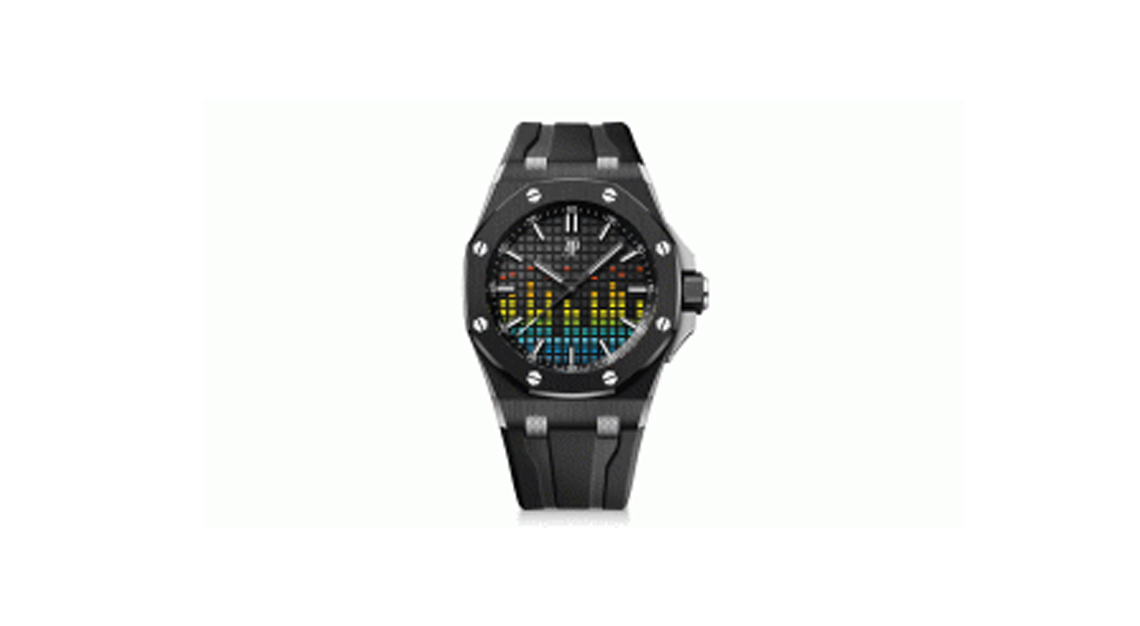
In 2022, AP dropped five new music-inspired Offshores inspired by the world of music—a world in which the maison has long been involved since its collaboration with Jay-Z in 2005. One of these references is a versatile, 37mm white-gold stunner: With a bezel inset with coloured gems arranged in a rainbow pattern and a blue aventurine dial further gem-set to resemble a VU metre, this stunning piece is paired to a textured blue rubber strap in a “constellation” texture with an 18-karat gold folding clasp. Though there are other Music Edition models within this mini-collection, this 37mm edition is perfectly sized for both men and women, with a dial whose artistry stands on its own regardless of the reference to recording equipment.
Diameter: 37mm
Movement: Calibre 5909 automatic
Price on Secondary Market Today: Upon request
Ref. 26238CE.OO.1300CE.01 Selfwinding Chronograph (2023)
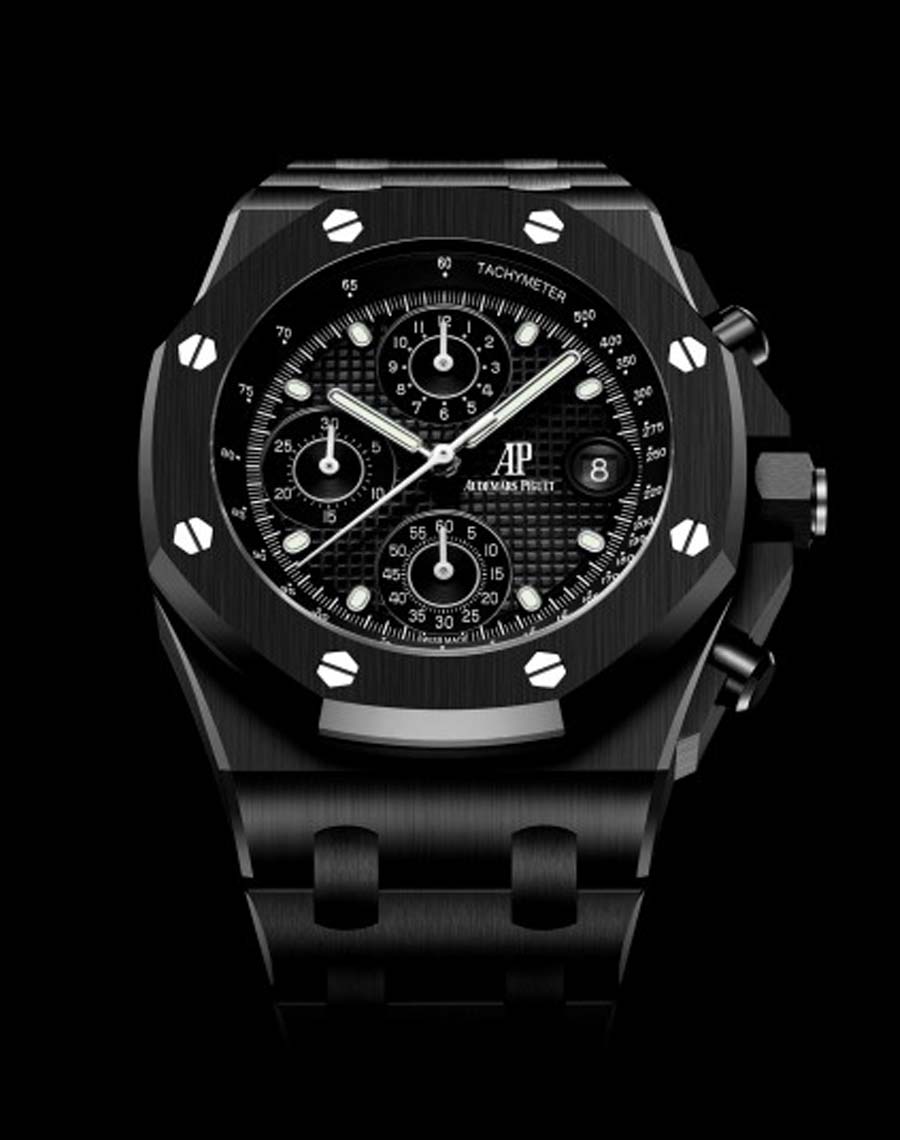
In time for the collection’s 30th anniversary, AP dropped its newest version of the Selfwinding Chronograph—this time in black ceramic with a matching bracelet. A first for the brand, this stealthy take on a classic model is a reference to the End Of Days Edition from 1999 made in concert with Arnold Schwarzenegger. Measuring 42mm in diameter and 15.3mm thick, it’s paired with a black petit tapisserie dial, a sapphire titanium caseback, and white gold hands and indices. Its Calibre 4404 automatic movement features flyback functionality and a 70-hour power reserve, and with 100m of water resistance, you certainly don’t need to worry about getting it wet. (If Schwarzenegger was going to battle either the Devil or a killer alien in 2023, we’d like to think he’d do it in this watch.)
Diameter: 42mm
Movement: Calibre 4404 automatic
Price on Secondary Market Today: US$84,400
Ref. 26236OR.YY.D002CA.01 Selfwinding Chronograph 37mm (2023)

Most recently, AP unveiled four new 37mm Offshore Selfwinding Chronograph references with gem-set bezels in 18K pink gold, yellow gold, or stainless steel. While each is a showstopper, there’s admittedly something about the pink gold-cased model with its rainbow of coloured gemstones that simply begs for a closer look: With excellent proportions of 37mm x 12.4mm, its bezel features 32 baguette-cut rubies, tsavorites, topaz, tanzanites, amethysts and orange, yellow, green, blue, violet and pink sapphires for a total weight of 2.33 carats. Water resistant to 50m, it’s powered by the brand’s automatic Calibre 2385 movement and features a gorgeous, black “Lady Tapisserie” dial with truncated pyramids, a triple-register chronograph layout, pink gold applied hour indices, luminescent hands, and a date window at 4:30.
Diameter: 37mm
Movement: Calibre 2385 automatic
Price: US$110,900
This story was first published on Robb Report USA

